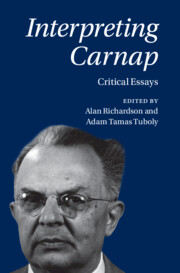Book contents
- Interpreting Carnap
- Interpreting Carnap
- Copyright page
- Contents
- Contributors
- Acknowledgments
- Abbreviations
- Introduction
- Part I Philosophy in New Dress
- Part II Naturalism and Method
- Part III The Logical and the Linguistic
- Chapter 8 Carnap’s Approach to Semantics and Syntax
- Chapter 9 Carnap on the Formality of Logic and Mathematics
- Chapter 10 Carnap on Probability and Induction
- Chapter 11 Metaphysics, Tolerance, and Language Planning
- Part IV Science and Theories
- Bibliography
- Index
Chapter 10 - Carnap on Probability and Induction
from Part III - The Logical and the Linguistic
Published online by Cambridge University Press: 01 February 2024
- Interpreting Carnap
- Interpreting Carnap
- Copyright page
- Contents
- Contributors
- Acknowledgments
- Abbreviations
- Introduction
- Part I Philosophy in New Dress
- Part II Naturalism and Method
- Part III The Logical and the Linguistic
- Chapter 8 Carnap’s Approach to Semantics and Syntax
- Chapter 9 Carnap on the Formality of Logic and Mathematics
- Chapter 10 Carnap on Probability and Induction
- Chapter 11 Metaphysics, Tolerance, and Language Planning
- Part IV Science and Theories
- Bibliography
- Index
Summary
Rudolf Carnap’s began to write on probability and inductive logic in 1945, marking a surprising shift in his research interests midway through his post-PhD career (1921–1970). His 1950 Logical Foundations of Probability is unquestionably his best-known work in this area, and yet his views afterwards underwent a substantial change over the next two decades, the extent of which was (and remains) often unappreciated. Inevitably some of his views underwent critical examination, both during his lifetime and after, but he was fortunate in being able to benefit in meeting these from the contributions and support of a number of mathematically and philosophically gifted collaborators. This essay traces the origins of his interest, the nature of these shifts, and some of the contributions of the members of his invisible college. Although the special technical contributions of Carnap continue to engage the attention of a small but influential group of individuals, his more general impact was much broader, often shaping as it did the current widespread epistemic and Bayesian view of the field.
Keywords
- Type
- Chapter
- Information
- Interpreting CarnapCritical Essays, pp. 192 - 213Publisher: Cambridge University PressPrint publication year: 2024

